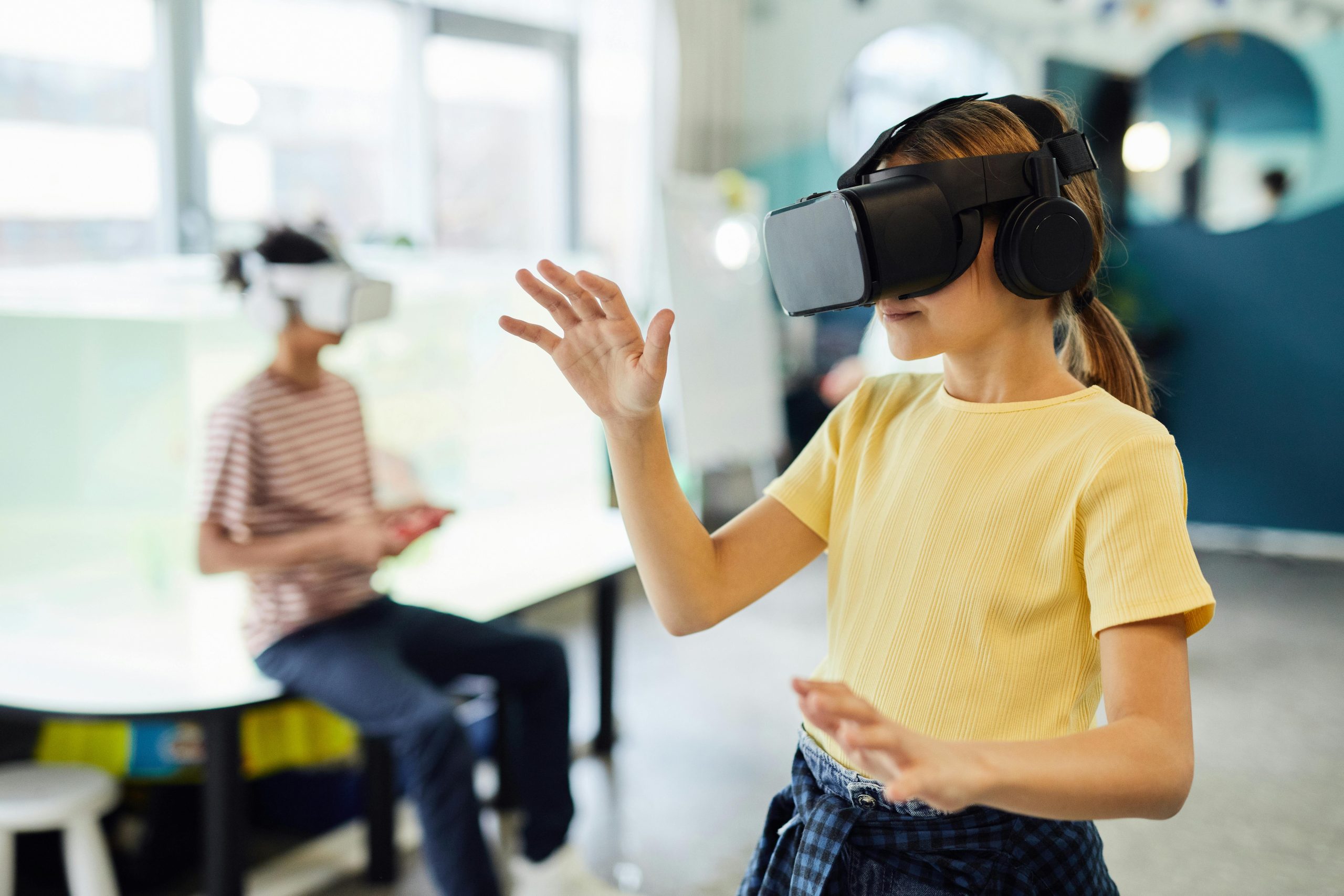Imagine a classroom where students can explore the solar system by walking through it, dissect a virtual frog without the mess, or witness historical events unfold right before their eyes. This is the power of augmented reality (AR) in education—a technology that overlays digital content onto the real world, creating immersive and interactive learning experiences. As AR continues to evolve, its potential to revolutionize education is becoming increasingly clear. From K-12 to higher education and professional training, AR is poised to transform how we teach and learn, making education more engaging, accessible, and effective.
What Is Augmented Reality in Education?
Augmented reality (AR) is a technology that superimposes computer-generated images, sounds, or other data onto the real world, enhancing the user’s perception of their environment. Unlike virtual reality (VR), which creates a fully digital world, AR blends digital elements with the physical world. In education, AR can be used through smartphones, tablets, AR glasses, or specialized headsets to create interactive lessons, simulations, and visualizations.
For example, a biology student might use an AR app to project a 3D model of the human heart onto their desk, allowing them to explore its structure from every angle. Similarly, history students could witness a reenactment of the signing of the Declaration of Independence in their classroom. These experiences make abstract concepts tangible, fostering deeper understanding and retention.
Benefits of Augmented Reality in Education
The integration of AR into education offers numerous advantages that cater to diverse learning styles and needs. Here are some key benefits:
- Enhanced Engagement: AR turns passive learning into an active experience, capturing students’ attention and motivating them to explore subjects in depth.
- Improved Retention: Interactive and visual learning aids help students retain information better than traditional methods like textbooks or lectures.
- Accessibility: AR can provide personalized learning experiences, accommodating students with different abilities and learning paces.
- Real-World Application: Simulations and virtual labs allow students to practice skills in a safe, controlled environment before applying them in real life.
- Collaboration: AR enables group activities where students can work together on projects, fostering teamwork and communication skills.
Current Applications of AR in Education
AR is already making waves in classrooms and training programs worldwide. Here are some real-world examples of how AR is being used today:
Interactive Textbooks
Publishers are embedding AR features into textbooks, allowing students to scan pages with their devices to unlock 3D models, animations, and quizzes. For instance, a geography textbook might include AR maps that show terrain changes over time.
Virtual Labs
Science students can conduct experiments in virtual labs, reducing the need for expensive equipment and hazardous materials. AR apps simulate chemical reactions, physics experiments, and biological processes with lifelike accuracy.
Language Learning
AR language apps overlay translations and pronunciations onto real-world objects, helping learners associate words with their meanings in context. This immersive approach accelerates language acquisition.
Professional Training
Medical students use AR to practice surgeries, while mechanics train on virtual engines. AR provides hands-on experience without the risks associated with real-world training.
The Future of AR in Education
As AR technology advances, its role in education will expand even further. Here are some exciting possibilities for the future:
Widespread Adoption of AR Glasses
Lightweight, affordable AR glasses could replace smartphones and tablets as the primary AR devices in classrooms. These glasses would allow students to interact with digital content hands-free, making learning even more seamless.
AI-Powered Personalized Learning
Combining AR with artificial intelligence (AI) could enable adaptive learning experiences tailored to each student’s strengths and weaknesses. AI could analyze a student’s progress in real time and adjust AR content accordingly.
Global Collaborative Classrooms
AR could connect students from around the world in shared virtual spaces, enabling cross-cultural collaboration on projects and fostering global awareness.
Gamification of Education
AR games that teach subjects like math, history, or science could make learning fun and competitive. Leaderboards, rewards, and interactive challenges would motivate students to excel.
Challenges and Considerations
Despite its potential, AR in education faces several challenges that must be addressed for widespread adoption:
- Cost: High-quality AR devices and software can be expensive, limiting access for underfunded schools.
- Technical Barriers: Teachers and students may need training to use AR tools effectively.
- Content Quality: Not all AR educational content is created equal; some may lack depth or accuracy.
- Privacy Concerns: AR apps that collect student data must comply with privacy regulations to protect sensitive information.
Conclusion
The future of augmented reality in education is bright, offering transformative possibilities for how we teach and learn. By making education more interactive, engaging, and accessible, AR has the potential to bridge gaps in learning and prepare students for a rapidly changing world. While challenges remain, ongoing advancements in technology and increasing investment in AR solutions will likely overcome these hurdles. As educators and developers continue to innovate, AR will undoubtedly play a central role in shaping the classrooms of tomorrow.
